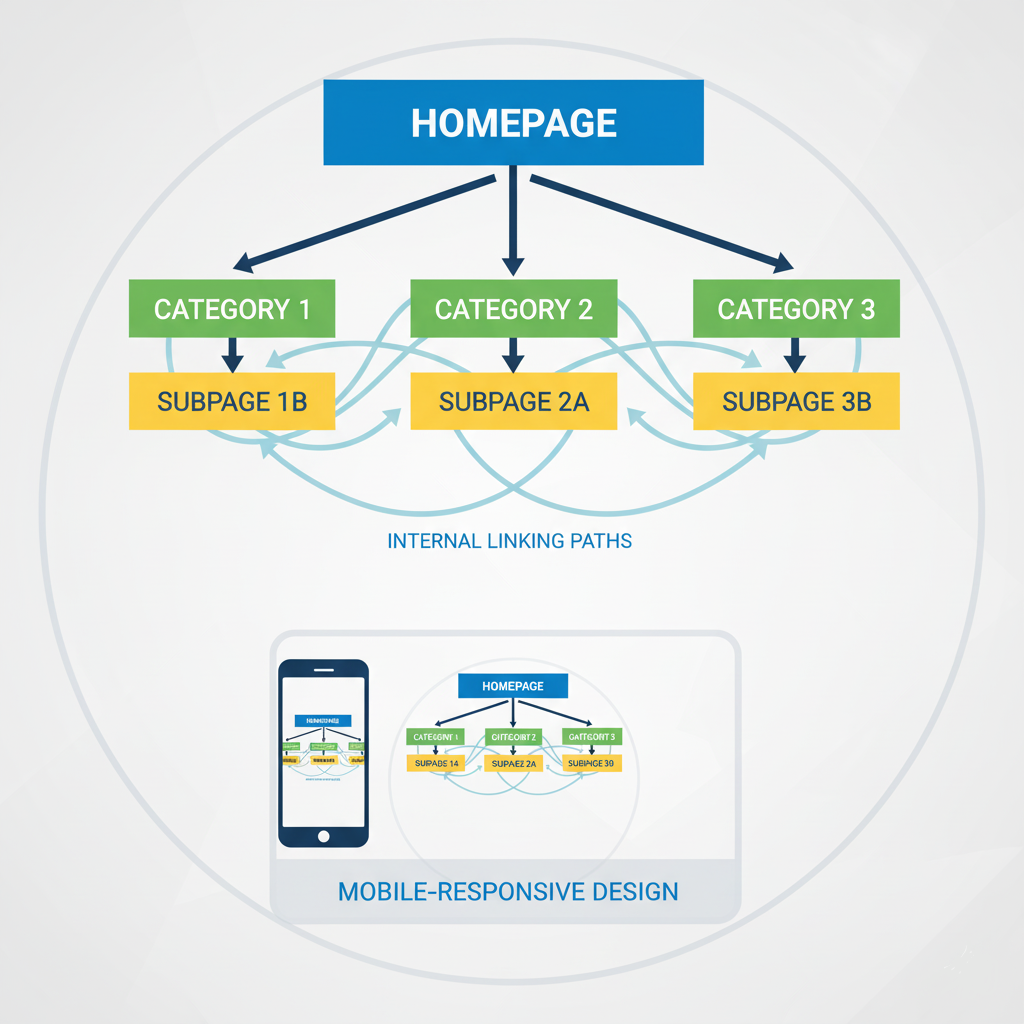Why SEO-Friendly Website Architecture Matters
A well-structured website is more than just an organized layout—it directly impacts your SEO performance. An SEO-friendly website architecture helps search engines crawl and index your pages efficiently, boosts user experience, and can improve your site’s ranking on Google.
When designing your website, it’s crucial to focus on hierarchy, URL structure, internal linking, and mobile usability. These factors not only support SEO but also enhance usability, keeping visitors engaged longer.
1. Plan a Clear Site Hierarchy
Organizing your website in a logical hierarchy ensures that both users and search engines can navigate your content easily.
Best practices include:
- Keep your site hierarchy shallow: Ideally, pages should be reachable within 3 clicks from the homepage.
- Group related content under relevant categories.
- Use breadcrumbs for easy navigation and indexing.
Learn more about SEO strategies at Creative Idea Labs.
Check Google’s guide on SEO site structure.
2. Optimize URL Structure
A clean, descriptive URL structure improves crawlability and user trust.
Tips for SEO-friendly URLs:
- Include target keywords in URLs.
- Use hyphens instead of underscores.
- Keep URLs short and descriptive.
For example:https://creativeidealabs.com/seo-friendly-website-architecture-best-practices
3. Implement Strategic Internal Linking
Internal links guide both users and search engines through your content.
Key strategies:
- Link from high-authority pages to new content.
- Use descriptive anchor text with your focus key phrase where appropriate.
- Avoid excessive linking that could confuse crawlers.
This boosts indexing and distributes link equity across important pages.
4. Mobile-First Design
Since Google uses mobile-first indexing, a responsive design is non-negotiable.
Best practices:
- Ensure that all site elements render correctly on mobile devices.
- Optimize page speed for mobile users.
- Maintain a consistent user experience across devices.
Google on mobile-first indexing.
5. Prioritize Page Speed and Performance
Website performance directly affects SEO rankings and user engagement.
Best practices:
- Compress images and use modern formats like WebP.
- Enable browser caching and minimize scripts.
- Choose reliable hosting for faster server response times.
Moz guide on page speed and SEO.
6. Structured Data and Schema Markup
Adding structured data helps search engines understand your content, enhancing your SERP appearance.
Tips:
- Use schema for products, articles, breadcrumbs, and reviews.
- Validate your markup with Google’s Structured Data Testing Tool.
Conclusion: Building an SEO-Friendly Website Architecture
Creating an SEO-friendly website architecture is essential for higher search engine rankings and a better user experience. By implementing clear hierarchy, optimized URLs, internal linking, responsive design, fast performance, and structured data, your website can outperform competitors in search results.
Explore more insights at Creative Idea Labs.




